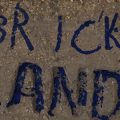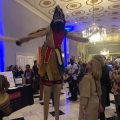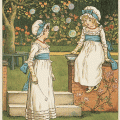“Unsettled Nature: Artists Reflect on the Age of Humans”
A new exhibition merges art and science to ask, “What is ‘natural’ in a world dominated by humans?”
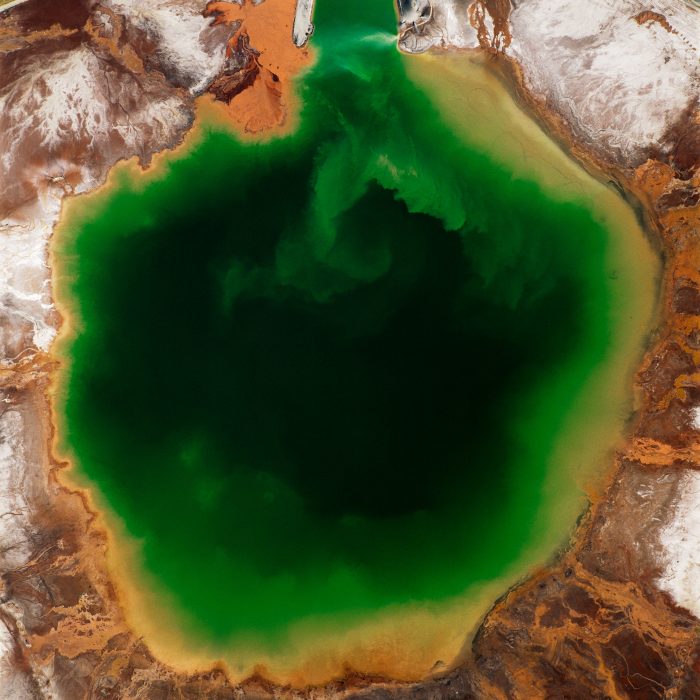
Artist: David Maisel
Credit information: © David Maisel/ Courtesy of Edwynn Houk Gallery.
“American Mine” features open pit mines on the Carlin Trend, the most prolific gold mining district in the Western Hemisphere. Mines from this region are the source of devastating mercury emissions, released when ore is heated during the process of gold extraction.
Contemporary artist Bethany Taylor stood atop a lift and carefully pinned a seal made of string to the wall. Behind her, an image of the burning Amazon rainforest is woven into a tapestry. And on the wall to her left, a string human skeleton holding an umbrella hangs next to another tapestry of Hurricane Sandy.
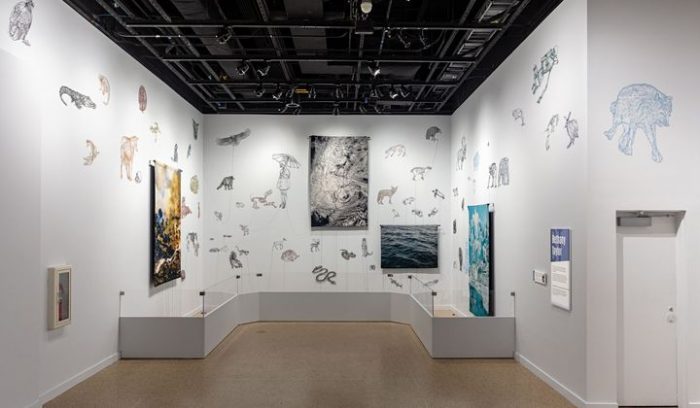
Taylor is one of seven artists whose work is featured in the National Museum of Natural History’s new exhibition, “Unsettled Nature: Artists Reflect on the Age of Humans.”
The exhibition merges art and science to address the impacts humans have on the earth and raises the question of what is “natural” in a world dominated by humans.
Scott Wing from the museum and his co-curator, Joanna Marsh from the Smithsonian American Art Museum, have been planning the exhibition for about two years. Wing said the idea was born from a desire to communicate science in a different way.
“Scientists need to develop more ways of speaking to people, because the way we’re speaking to people is not leading to the kinds of change that we think it needs to lead to,” he said. Wing is a paleoclimatologist — he studies fossils to better understand earth’s past climate, which can help make sense of the impacts of our current human-caused climate change.
“We thought art and science together might be a more powerful way of affecting people’s emotions as well as their intellect,” he continued.
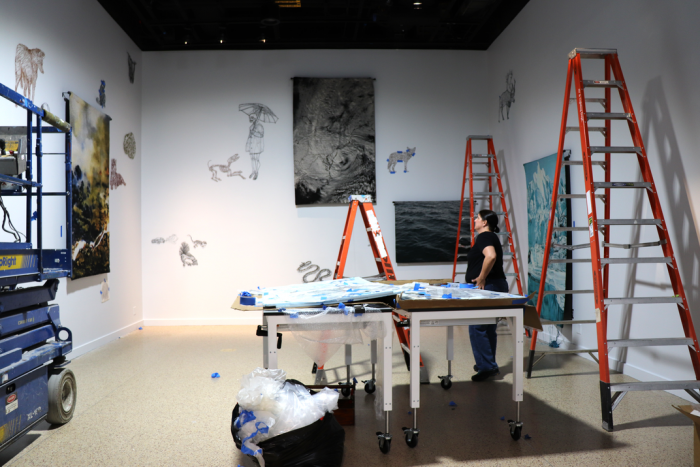
Wing wants people to be a little uncomfortable when reflecting on what the exhibition shows them about their own thoughts and behaviors. The exhibition is titled “Unsettled Nature” to show how humans are unsettling nature by our presence, but also
because it might be unsettling to think about how dependent we are on it.
Wing and Marsh found artists whose works portray humans intimately connected to nature in unique ways.
“We were trying to find people who were seeing the world in ways that would provoke thought, but not despondency,” he said. “And then, we wanted people who were seeing connections, who were taking unfamiliar points of view.”
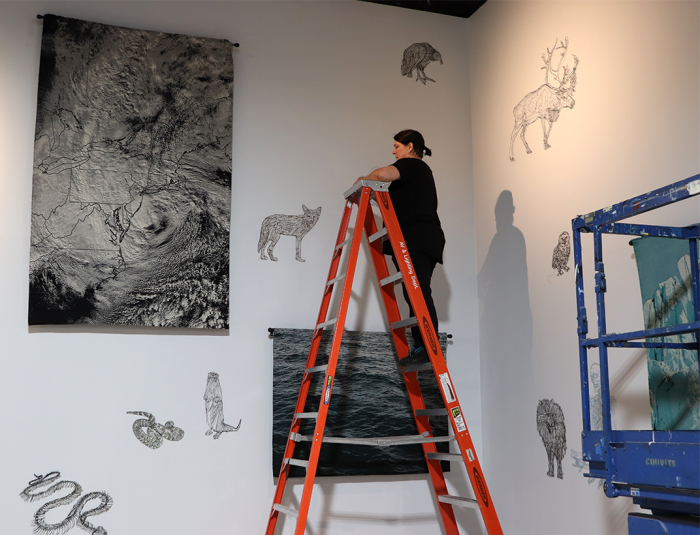
Taylor’s artwork shows these intricate connections between life forms on earth. On three walls, animals hang around tapestries that illustrate their environment. Each animal is made of a single string held together only by pins and gum arabic, a natural substance made of sap. More strings connect the animals to each other and their various habitats.
“It’s almost like if you pull one string, they’ll all unravel,” Taylor said. “I love that metaphor of interconnection.”
Taylor created most of these artworks specifically to display at the museum and included a tapestry which shows a map of the Northeast and Hurricane Sandy to add a local element to her installation. Taylor spent about a week carefully pinning her string pieces to the wall, using the layout of the room to help determine where they would go. When she saw a fire extinguisher hanging on the back wall, she knew that the tapestry of the Amazon burning should go next to it.
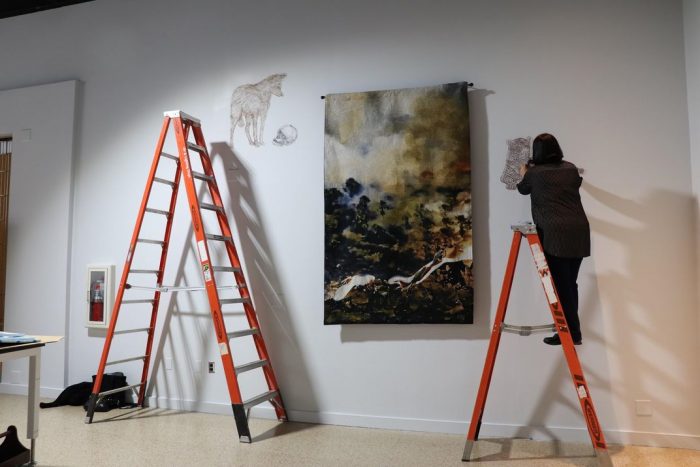
In addition to animals, Taylor included string human skeletons in her installation to show that we are not superior to the animals and organisms around us.
“You’re not the privileged perspective as the human,” she said. “You’re just part of it all.” She made the human skeletons to remind us that if nature dies, so do we.
Taylor has experience combining science and art. At the University of Florida, she co-taught a class with a biology professor that had both biology and art students enrolled.
“I think that artists can make research more accessible to the general public, which is really important right now,” Taylor said. “Art can make visible something that’s so invisible, like climate change.”
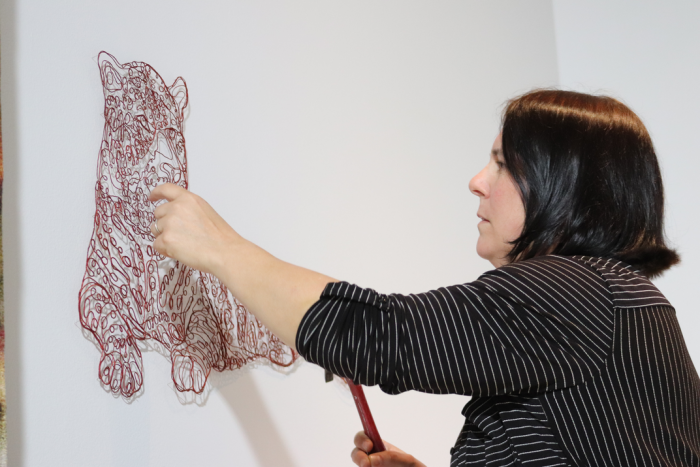
In addition to Taylor’s artwork, the exhibition displays pieces from Ellie Irons, David Maisel, Edward Burtynsky, Dornith Doherty, Andrew S. Yang and Jenny Kendler. The artwork ranges from photography of oil spills by Burtynsky to a vintage ivory piano that plays music translated from elephant poaching data by Kendler.
Unlike typical museum exhibitions, which present straight facts, this exhibition is open for audience interpretation. But, ultimately, Wing hopes it will help people better understand the world around them.
“It’s almost like, what did Picasso say?” Wing asked. “‘Art is a lie that makes us see the truth.’ That’s actually a good quote for this. It’s funny, I hadn’t connected that before. But I hope these artworks enable people to realize the truth.”
This post by Margaret Osborne was originally published by the Smithsonian magazine blog, Smithsonian Voices. Copyright 2021 Smithsonian Institution. Reprinted with permission from Smithsonian Enterprises. All rights reserved. Reproduction in any medium is strictly prohibited without permission from Smithsonian Institution.
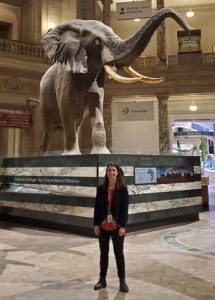
Margaret Osborne is an intern in the Smithsonian National Museum of Natural History’s Office of Communications and Public Affairs. Her journalism has appeared in the Sag Harbor Express and aired on WSHU public radio. Margaret is an undergraduate at Stony Brook University, where she majors in journalism and German language and literature and minors in environmental studies. She’s spending her last semester in Washington, D.C. and will graduate in May.
Posted: 8 July 2021
